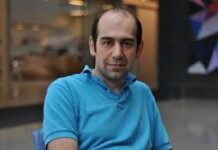The University of Waterloo became one of numerous esteemed institutions to take part in Hong Kong’s multi-billion dollar initiative, InnoHK, to lead visionary eye health research.
Hong Kong’s Science and Technology Park (HKSTP) has recently become home to the Centre for Eye and Vision Research (CEVR) in collaboration with the UW School of Optometry and Vision Science. The CEVR will facilitate research programs aimed at preventing vision loss and maintaining healthy vision.
The InnoHK program is funded by the Government of Hong Kong, and connects international universities with local institutions within Hong Kong. The UW School of Optometry is one of three equal partnerships within the InnoHK program and is ranked fifth in the world for vision research.
“International collaborations are becoming the standard for addressing societal needs.” said Bob Lemieux, dean of Science at UW in a WaterlooNews interview.
The InnoHK centres bring about an unparalleled connectedness between researchers from around the world in one centralized research hub in Hong Kong — a definite advantage in propelling research forward.
“While CEVR is focused on the biggest challenges in vision science, there are other InnoHK centres next door to CEVR working on health-related areas like neurodegenerative diseases, microbiology and advanced biomedical instrumentation. They each operate in the larger entrepreneurial ecosystem of Hong Kong Science Park to build an incredible pool of talent and hopefully one in which we’ll be able to cross-fertilize and develop new collaborations in health-based research,” Lemieux said.
Dr. William Ngo of the UW School of Optometry is one of the researchers currently at work at the CEVR. His research aims to compare differences in the microbiology and biochemistry of the ocular surface between Canadian and Asian demographics. The findings of his research, alongside those of Dr. Thomas Lam at the Hong Kong Polytechnic University, will be used to develop treatments and prevention methods for dry eye.
“Bringing together our clinical and basic sciences expertise from both sides of the world has been critical in helping us to identify what differences exist and how risk factors differ between the two populations,” Dr. Ngo said.
Dr. Ngo’s research is the first of its kind to be conducted on a global scale. It is part of the CEVR’s five-year plan to create the first centre devoted solely to dry eye research.
Numerous other researchers from the UW School of Optometry are utilizing the CEVR to conduct studies that aim to solve the biggest issues in vision science faced by the world today.
Dr. Deborah Jones is one such researcher, studying myopia (nearsightedness) at the CEVR. Myopia is caused by an elongation of the eye resulting in blurred vision, and significantly impacts Asian populations. Jones’ research aims to better understand the causes of myopia and develop technologies that can prevent myopia, slow its development, and ultimately reverse its progression.
Similarly, Dr. Lyndon Jones is another researcher at the CEVR developing drug-delivery technologies to treat diseases such as ocular allergy, macular degeneration, and diabetic retinopathy. His research is dedicated to developing technologies capable of delivering drugs to both the front and back of the eye. These potential technologies include eye drops, inserts of the ocular surface and contact lenses that can eventually be used in clinical practice. Recently, Dr. Lyndon Jones also authored a paper reviewing advancements in contact lens research and drug-delivery methods.
Other vision issues — particularly those that affect older adults, such as age-related macular degeneration, glaucoma and strokes — are being studied by UW’s Dr. Tammy Labreche and Dr. Susan Leat. Their research revolves around developing methods of assessing the impact of a stroke alongside new ways of managing and rehabilitating eye diseases in affected individuals.
Alzheimer’s is another disease that disproportionately affects older adults, and its detection is the focus of professor Melanie Campbell’s research. Campbell, of the Department of Physics and Astronomy, is using polarized light to identify amyloid proteins found in the back of the retina to identify Alzheimer’s long before it begins to affect a patient’s cognitive ability.
“By assembling a team of world-leading researchers across two internationally renowned institutions, CEVR is allowing us to significantly advance eye and vision health in Canada, Hong Kong and world-wide,” said Dr. Ben Thompson, CEO of the CEVR.
































